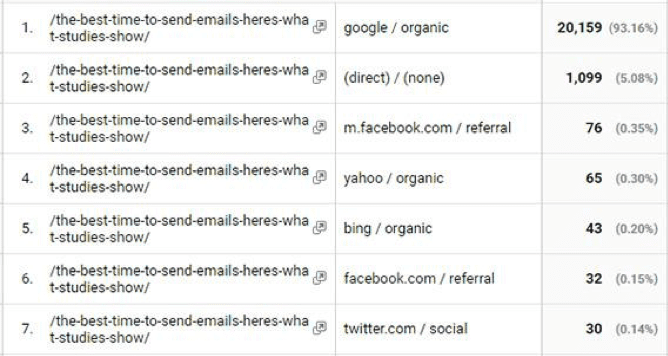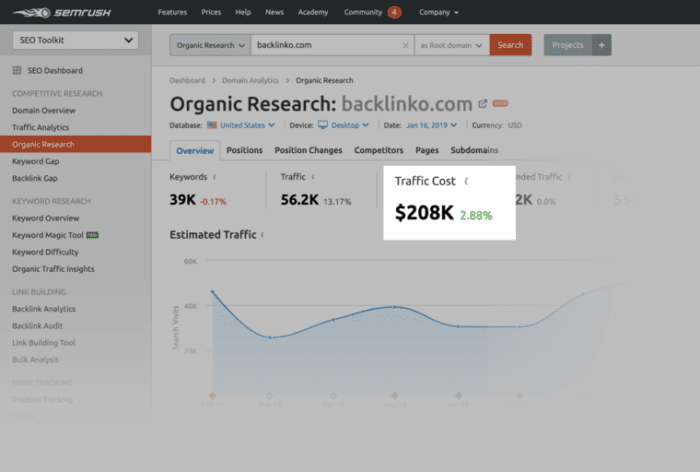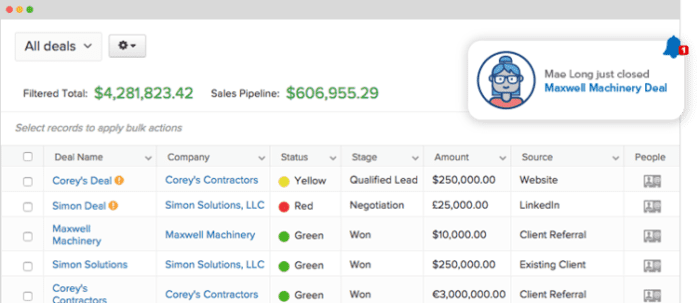Only 39% of marketers say they are somewhat successful at tracking the ROI of their content marketing, but there are ways to improve your proficiency
Content marketing is a highly effective form of marketing. Statistics show that per dollar, content marketing generates three times as many leads as traditional marketing.
As a content marketer, you understand these benefits and statistics. But your boss needs to be convinced. What amount of revenue is content marketing adding to your company’s bottom line?
If you find it difficult to answer that question, you’re not alone. In a survey of B2B marketers published on LinkedIn, only 39% considered themselves at least somewhat successful at tracking content marketing ROI.
In another study by the Content Marketing Institute and MarketingProfs, only 21% of B2B marketers say their organizations are successful at tracking content marketing ROI.
Despite its difficulty, it’s vital that you have hard numbers to justify your content marketing efforts.
In a moment, I’ll show you how to calculate the ROI figures that help to convince management to continue investing in content marketing. Or even increase their investment.
A brief formula you can use to calculate your return on investment (ROI) is:
ROI = (Gains from investment – cost of investment)/(cost of investment) × 100%
In this blog post, discover what you need to do if you’re struggling to prove your content marketing ROI.
Understand your content marketing costs
The first question you need to answer is: how much are you investing in content marketing? To answer this question, you need to track the processes of your content marketing efforts and calculate a cost for each of them.
With this, you can have a total cost of your investment. Some important costs to consider are:
Cost of content creation
In most companies, content creation is either assigned to freelancers or in-house experts. If content creation is done by freelancers, your calculation may be a bit simpler.
You’ll have to calculate the amount you spend on content writing monthly. If you create accompanying images, then you should add the amount you spend on those images monthly.
If your content is created by in-house experts, you need to calculate their hourly wages. You’ll take account of their salaries, including benefits, and divide it by the number of hours they work. Once you calculate their hourly wage, you can multiply the value with the number of hours they need to produce content in a month.
Added to these, you’ll have to add the cost of software packages and services used in the process of content creation.
Cost of content marketing
Promoting your content to your ideal audience will lead to more costs. If you’re using social media, you may have subscribed to a social media scheduling software. Also, you may be using an email marketing software to promote your content. You have to calculate these costs.
How to measure your results
When it comes to measuring ROI from your content marketing efforts, there are many metrics you can track. Of course, I won’t advise you to use all the metrics. Because the metrics you measure depend on your content marketing goals. Some of these common goals are:
- Brand awareness
- Lead acquisition
- Customer acquisition
Some important metrics to consider are:
Website traffic
Many marketers call it vanity metrics, but it’s the foundation for all the important metrics. It’s simple, no traffic, no chance of making sales. If your goal is brand awareness website traffic is important.
With a tool like Google Analytics, you can get as much detail as you need. You can get:
- Overall traffic to your website
- Traffic to individual pages
- Traffic sources
- Landing pages
- Exit pages

Added to this, you can calculate the number of total social shares you got from your content pages and the amount of referral traffic those pages got from social media. You can use a tool like BuzzSumo to find the total number of social shares a page got during a period of time.

You can then use Google Analytics to find the total amount of referral traffic from social media sites.
Another form of website traffic to consider is search engine traffic. This is a source of targeted traffic as visitors are landing on your pages because they’ve made searches similar to the product you sell. You can use the Google Search Console and Google Analytics to calculate the number of visits from Google.

You can also use the SEMrush tool to see your traffic from search and the value of this traffic.

Number of qualified leads
Capturing a qualified lead is a vital stage of making the sale. Some important questions to answer are:
- How many people sign up with their information after going through your content?
- How many of them signed up on pages with lead magnets?
- What pages are responsible for capturing leads?
- What pages does a lead need to visit to become qualified?
You can capture the number of leads through content marketing on your customer relationship management (CRM) software. This will show their journey through your content pages. Some popular CRM systems are Salesforce, Zoho CRM, PipelineDeals, HubSpot and Agile CRM.

Number of customers
Converting customers through content marketing is one of the main results executives want. You can calculate this through the number of leads that end up buying from your company.
In some cases, it might be more complicated. Someone who knows about your company already might visit a single content page and buy your product or pay for your service. You need to account for every sale through your content pages whether it’s from a qualified lead or not.
Amount of sales
This is a bit complicated to measure. Your calculation might be inaccurate if you only account for a customer’s first purchase. Because a customer may buy many times from your business.
Therefore, you need to calculate the average customer lifetime value (CLV). This is the amount of profit you’ll make from a customer while they’re with your business. You’ll have to use your business historical data to arrive at an approximate value.
For a new customer, you might use this value rather than just their first purchase. The CLV for your company might change over time and you need to be aware of this.
How to determine ROI from content marketing results
Once you calculate your content marketing cost and the results you got through these efforts, the next step is to determine your ROI from those values. Your ROI is the single value that can give you or your boss an idea of the returns to expect from spending a dollar on content marketing.
How you calculate your returns on investment will depend on your content marketing goals.
Customer acquisition
Let’s consider this example for customer acquisition:
If you spend $120 on content marketing to acquire a single customer and an average customer will lead to a profit of $300 for your business during their time as a customer, then your ROI will be:
ROI = (300 – 120)/120 × 100% = 180/120 × 100% = 150%
In this case, your business will make a gain of $1 × 150% = $1.5 on every dollar spent on content marketing.
Lead acquisition
If your goal is lead acquisition, to find the ROI, you need to know the potential return of a single lead. You can do that by calculating your lead-to-customer conversion rates.
If you convert 20% of your leads to customers, then your conversion rate is 20%. If your average customer lifetime value is $500, then the value of a single lead will be:
$500 × 20% = $100
If you’re able to acquire 30 leads from your content marketing, then the value is $3,000. If you spent $2,000 to acquire those leads, then your ROI is:
ROI = (3000 – 2000)/2000 × 100% = 1000/2000 × 100% = 50%
This means you’ll gain an extra 50 cents for every dollar you spend.
Brand awareness
You can also calculate this for brand awareness. To do this, you’ll have to calculate the value of a single visit to your website.
Then you calculate the cost of acquiring a single visit. Once you get these values, use the ROI formula to calculate your ROI based on your goal.
How to measure ROI for off-site content
There are some content marketing campaign efforts you do off your website. For example, guest posting, social media and email campaigns are done off-site.
You need to track their ROI to see their effectiveness. For each channel, you need to calculate the referral traffic to your website from these sources. You can also track the leads and sales you get from these sources.
Some websites use UTM parameters to track traffic from these sources.
Conclusion
When you follow through with this process, you will have a hard number for the return on investment from your content marketing efforts. Apart from presenting a figure to your boss, calculating your content marketing ROI helps you to know the effectiveness of your content marketing strategy and help you uncover a need to update your content marketing strategy in order to improve your results.
